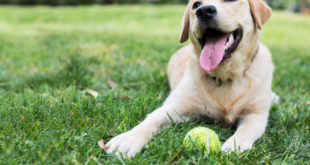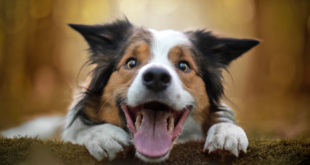Puppy Proofing Your Home with Leash Training – Welcoming a new furry friend into your home is an exciting and joyful experience. However, it also brings the responsibility of safeguarding your new pet from potential hazards that may lurk around the house. From loose electrical cords to toxic plants, there are numerous dangers that can put your puppy’s safety at risk. One of the most effective ways to prevent accidents is through leash training. This method enables you to keep your puppy close by and control their movements, reducing the risk of any mishaps. In this article, we’ll explore some of the benefits of puppy proofing your home with leash training and provide some useful tips to get you started.
Table of Contents
1. Start with Basics: Why Puppy Proofing Your Home is Essential
As soon as you bring a new puppy home, your home becomes their playground. And just like a newborn baby, puppies are curious and unaware of the dangers surrounding them. That’s why the first step you need to take is puppy-proofing your home. If you’re not sure how to start, we’ve got you covered.
- Remove all small objects that can be swallowed
- Close and secure all doors and windows
- Keep all hazardous items out of reach
- Cover all electrical cords and outlets
By taking these simple precautions, you can prevent your puppy from injuring themselves or causing damage to your home. At the same time, you can create a safe environment for your new furry friend to explore and play.
2. The Importance of Leash Training in Puppy Proofing
Puppy proofing your home is an important step to ensure the safety of your furry friend. One crucial aspect of this process is leash training. Not only does it help control puppies and prevent destructive behavior, but it also helps to protect them from potential hazards.
Leash training is often overlooked by new puppy owners but is a crucial part of their development. Aside from keeping them safe from traffic or other dogs, a leash enables you to teach your pup essential commands such as “heel” or “come.” With patience and consistency, your puppy will become comfortable with the leash and learn to walk calmly on it.
In addition to keeping your puppy safe and in control, leash training also provides the added benefit of creating a strong bond between you and your furry friend. The process of leash training requires a lot of communication and understanding, which strengthens the relationship and mutual trust. Don’t underestimate the importance of leash training when puppy proofing your home – it could be the key to a happy and healthy relationship with your dog for years to come.
3. Tips to Leash Train Your Puppy Effectively
One effective way to start the leash training process is by first introducing your puppy to the leash. Allow them to sniff and investigate the leash, then gently attach it to their collar and allow them to wear it around the house. This helps them become comfortable with wearing a leash and reduces any fear or anxiety they may have towards it.
Consistency is key when it comes to leash training. Keeping a regular schedule for walks and using the same commands each time will help your puppy understand what is expected of them. Rewarding good behavior with treats and praise is also important to reinforce positive behavior.
Finally, it’s important to be patient and take things at your puppy’s pace. They may not immediately understand what is expected of them and may need time to adjust to walking on a leash. It’s important to give them time and space to explore their surroundings while learning to walk on a leash. Remember to stay positive and celebrate small successes along the way.
4. Common Home Hazards to Watch Out for While Leash Training
When it comes to leash training your pup, there are some common hazards that you should be aware of. Knowing what to watch out for can help keep you and your pet safe during training sessions.
– Slippery surfaces: Avoid areas with slick or unstable footing, especially when your dog is learning to walk on a leash. This can include wet grass, polished floors, and gravel driveways. Look for a flat, stable surface to practice on, like a level concrete sidewalk.
– Sharp objects: Keep an eye out for debris such as broken glass, nails, or rocks that can harm your pup’s paws. It’s also a good idea to avoid areas with sharp fence posts or wires that your dog could become tangled in.
– Busy streets: Dogs can be easily distracted, especially if they’re not used to walking on a leash. Stay away from busy roads or intersections where your pet could get into danger. Start with quiet, residential streets and gradually work your way up to busier areas.
Other hazards to watch out for while leash training include other dogs that may not be well-behaved, people on bikes or skateboards, and low-hanging branches or wires. Remember that patience and consistency are key when it comes to leash training, and always prioritize your pet’s safety.
5. Conclusion: Ensuring Safety for Your Furry Companion Through Puppy Proofing and Leash Training
Ensure your furry companion’s safety by taking the right measures and precautions. Puppy proofing your home is the first step towards creating a safe environment. Keep hazardous substances, choking hazards, and electrical cords out of reach. Ensure that all potential escape routes are blocked or inaccessible. You can also leave a designated room where your puppy stays when unsupervised. This way, your furry friend stays safe, and you have peace of mind when completing your day-to-day activities.
Leash training is crucial for preventing your dog from getting into danger. It also helps to establish boundaries and discipline for your furry friend. Introduce your puppy to the leash early, allowing them to get comfortable with it bit by bit. As they progress, teach them commands such as ‘heel’ and ‘stop’ while you walk. This builds a system of communication between you and your dog, which is essential when preventing them from running or pulling away from you unsafely.
Safety is a priority when it comes to taking care of your furry friend. With these measures, you can ensure a safe and enjoyable environment for your dog. Remember to regularly check for potential hazards, such as new or unfamiliar objects in your pet’s way. Observe your furry companion’s behavior and adjust your safety measures accordingly. With the right precautions and training, you and your furry friend can enjoy a long and fulfilling relationship together.
Congratulations on taking steps to make your home safe for your puppy, and giving it the best possible start in life! With the right leash training, you can make sure that your pup is safe and comfortable in their new home. Not only will you be giving them the training they need to stay out of trouble, but you’ll be able to share lots of love and companionship too. Enjoy your time with your new puppy!
 Treat For Dog – Brain Training for Dogs, Dog Training & Obedience Discover Treat For Dog and get your pup on the path to smarter, happier, and healthier living with brain training for dogs.
Treat For Dog – Brain Training for Dogs, Dog Training & Obedience Discover Treat For Dog and get your pup on the path to smarter, happier, and healthier living with brain training for dogs.




